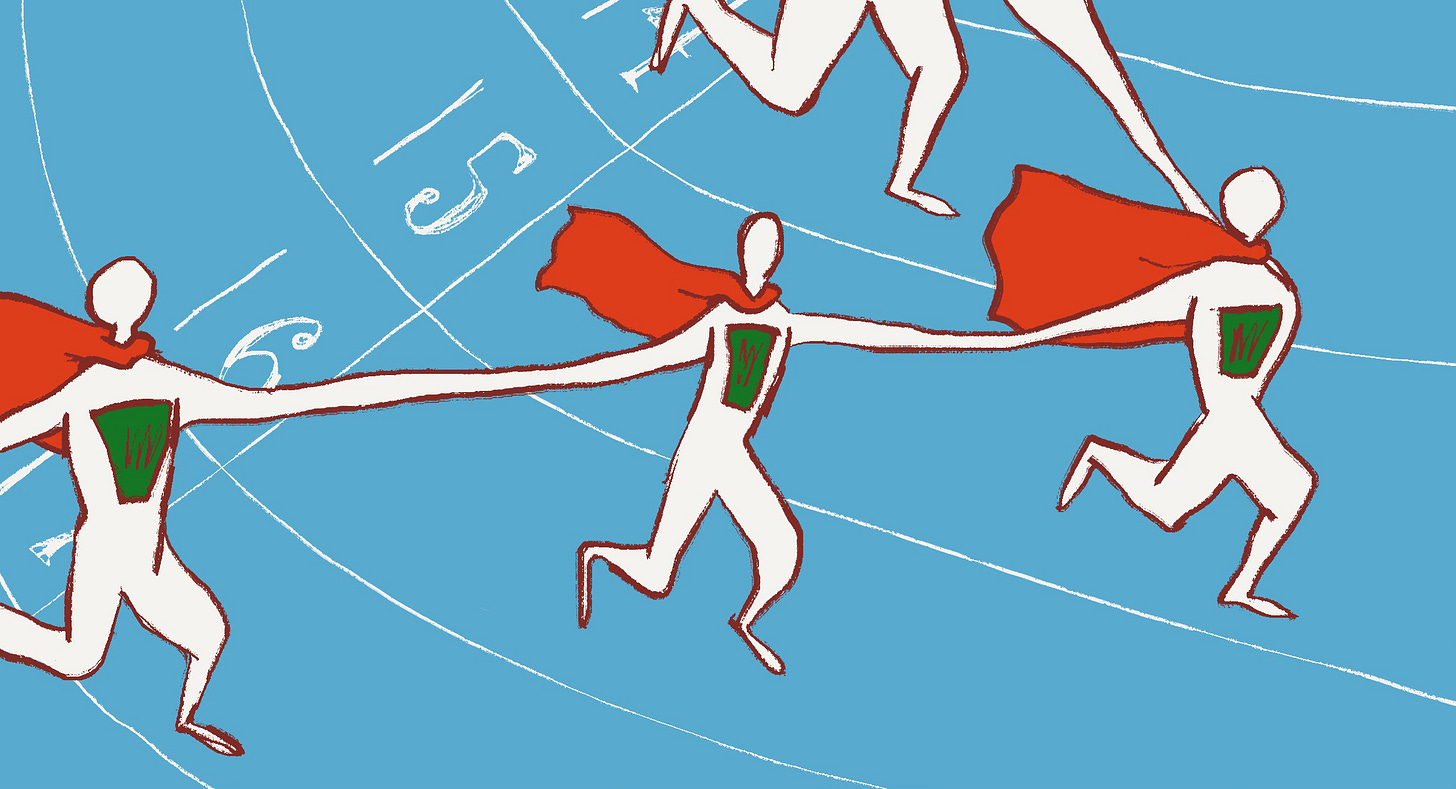The proximity principle of collaboration
Creating the group environments for novel thinking and expansion.
*ANNOUNCEMENT*
Introducing two forms of inquiry: MENTAL MODELS and THOUGHT ESSAYS, by Ideas Economy. Designed as a perfectly juxtaposed pairing to stimulate your mind.
MENTAL MODELS are your monthly pocket-sized blueprints for structured intelligence. Synthesised frameworks derived from current data, research, and cultural trends. Precisely curated to be easily applicable tools as you work and create.
THOUGHT ESSAYS are your weekly dose of open-ended, playfully subversive explorations that invite you to think differently about the everyday and the systemic alike.
Subscribers, expect a new MENTAL MODEL on the first Tuesday of every month, and a THOUGHT ESSAY every Wednesday.
Now, onto your regular reading…
Collaboration thrives in proximity. Not exactly sameness, but closeness. Where people are near-peers, close enough to relate but different enough to challenge.
We often default to hierarchical pairings: novices with experts, juniors with seniors. It’s okay but rarely leads to the most generative outcomes. Growth is iterative. And people learn best from others who sit nearby on the curve.
This idea first came into my periphery from Joe Hudson, that growth and development is more effective when it’s learned from some two steps ahead of you, rather than someone ten steps ahead. If you threw one expert into a sea of novices (by whatever your metric of novice and expert is), we don’t learn much. The same applies in reverse. A lone novice in a room of experts does not benefit so much. People expand, and collaborate best, when surrounded by others who are close enough in skill or context to translate insight, but different enough to expand perspective. A dynamic gradient where value flows between people at varying levels of development.
It might feel deflating or even annoying to receive guidance from someone at the top of their industry. Why? That person is too far removed from the intimate challenges of being in the position of the other. Too far removed from where they once started. And so, because of that they churn out generalist advice that isn’t totally helpful. When I was in MBA school, I saw this all the time in the CEOs and leaders of industry who would present talks or Q&As with us. An MBA candidate would ask how they led a certain transformation, or how they managed to achieve a certain impressive bottom line. More often than not, they’d cite a usual slew of leadership traits (vision, negotiotiation, charisma, empathy, etc.) or discuss the importance of hard work and problem-solving skills. All good, but not that helpful, and for me observing it became clear that those leaders of industry didn’t actually know themselves and what made their stories successful.
The people who expand and inspire us are people we recognise ourselves in. It’s not the impressive track record that makes them magnetic. It’s that they remind us of our own potential and therefore sparks that potential to activate within us.
The truth is, you have far more influence when you’re just a few steps ahead. Impact lands deeper when the distance is shorter. If you have not quite ‘made it’ (whatever that means for you), your ripples of influence might not spread wide – but they go deep. It’s just a different approach.
A question for you: what group dynamics have created the most growth for you?
Those moments – where learning is mutual, and collaboration is alive – are where novel ideas begin. Before they are refined, scaled, or monetised. Precursors to the earliest nuggets of capital, waiting to be put to use.



